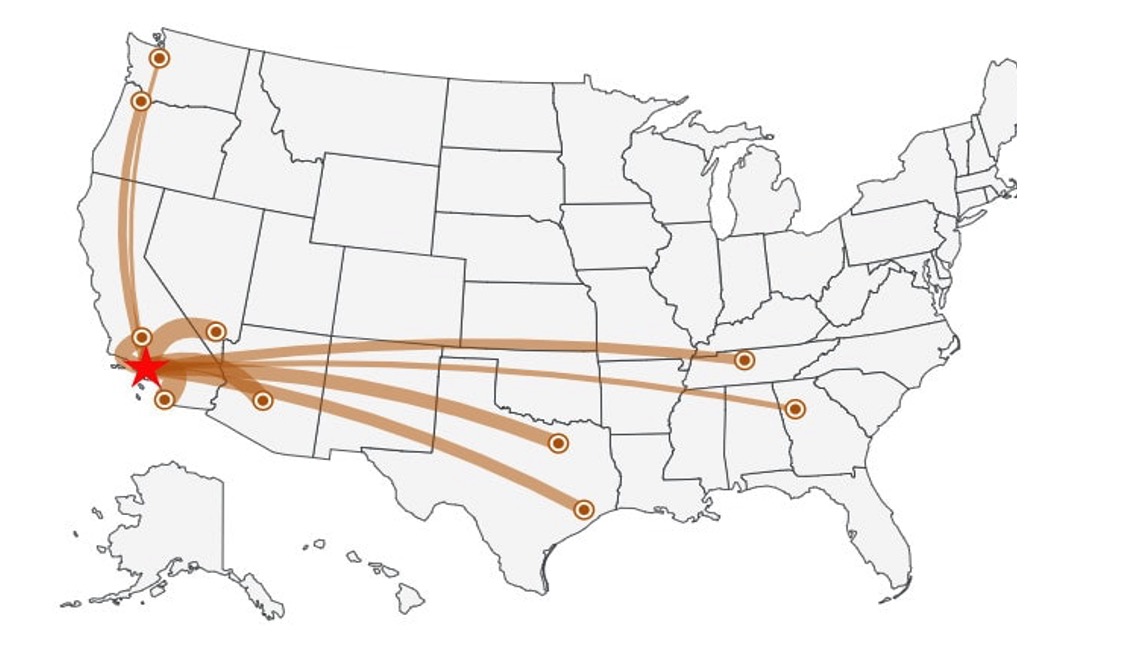Comments
PLANNING WATCH - At present LA’s population is about 3.7 million people, 500,000 fewer residents than the 4.3 million people City Hall predicted for 2010. Furthermore, the State of California’s Finance Department reported that LA’s population is declining, and this trend will continue into the foreseeable future. By 2060 LA’s population will have shrunk by another 500,000 people, to approximately 3,216,000 Angelenos.
These shocking numbers have barely caused a ripple at LA’s City Hall, where the urban growth machine reigns supreme. The new 2021-2029 Housing Element and the slow moving updates of LA’s old 35 Community Plans are cut from this same cloth. When the City Council finally adopts these updates, they will also adopt and append extensive up-zoning ordinances to them. These revised zoning ordinances will permit more density, height, and stories on existing parcels in order to implement the Housing Element. In addition, new statewide laws, such as Senate Bill 9, and local ordinances, particularly Transit Oriented Communities, supplement the new Housing Element and the eventual Community Plan updates. This combination of State laws and municipal ordinances to deregulate zoning allows real estate developers to dodge most existing zoning laws.
In particular LA’s 2021-2029 Housing Element has 136 implementation programs. Most are cosmetic, with little bureaucratic energy devoted to them. One implementation tool though, Program 121, RHNA Up-zoning, shown below, will not become a priority. It appends an up-zoning ordinance to each Community Plan. Furthermore, City Hall has only adopted seven Community Plans over the past two decades. In addition City Hall is slowly updating 16 Community Plans, in the San Fernando Valley and in West LA. This update process began in 2019, and these Community Plans do not yet have a plan text or a Draft Environmental Impact Report.
“Housing Element implementation program 121:
RHNA RE-ZONING (Regional Housing Needs Assessment)
. . . To accommodate the remaining RHNA of 255,432 units, Los Angeles City Planning (LACP) will identify and recommend rezoning for a minimum of 124,880 moderate and above moderate units and a minimum of 130,553 lower income (VLI and LI) units by October 30, 2024. More than 50% of lower income rezoning will occur on sites with exclusively residential uses or allowing 100% residential uses. All lower income sites will have a density allowance of at least a minimum 20 units per acre. Rezoned sites will permit owner-occupied and rental multifamily housing . . . in which 20 percent or more of the units are affordable to lower income households . . .
The Rezoning Program is anticipated to be implemented through a number of work efforts, including updates to up to 16 Community Plans, including four West LA plans, six SE/SW Valley plans, two Downtown plans, Boyle Heights, Hollywood, Harbor-Gateway, and Wilmington), two Specific Plans (CASP and Slauson TNP), as well as at least one citywide ordinance that will create additional zoning capacity through an expansion of affordable housing incentives.”
Even if the Housing Element’s broad upzoning program (#121) is eventually implemented through Community Plan updates, it will fail for two overlooked reasons:
Reason 1: Neo-liberalism (deregulation) does not work. In Los Angeles developers rarely care about a parcel's zoning. When they decide to invest in a new, highly profitable real estate venture that conflicts with existing zoning laws, they apply for and are granted a zone variance or zone change 90 percent of the time. Despite this low hanging fruit, real estate investors and developers are rarely interested in building by-right apartments on LA's long commercial/transit corridors. This is why upzoning residential areas to spark a building boom of new apartments will make little difference. As economists say, “You cannot push a string.” Or, to paraphrase, cities cannot force investors to part with their capital by eliminating zoning and environmental regulations -- unless their real estate investments, like already legal McMansions -- will be highly profitable.
Reason 2: Neo-liberalism (deregulation) makes the housing crisis worse. Upzoning allows more uses and larger, denser buildings on existing parcels. This raises the price of land, which, in turn, inflates the cost of housing. The result is more, not less, homelessness and overcrowding. This is why the 2021-2029 Housing Element’s implementation programs have failed to reduce homelessness and overcrowding. It also explains why several hundred thousand financially stressed Los Angeles residents have moved to cheaper housing markets, like Nevada, Arizona, and Texas.

Moveout destinations from Los Angeles.
Despite dramatic population decline freeing up many apartments and houses, homelessness is not going away in Los Angeles because up-zoning makes the housing crisis worse. Combined with the elimination of mental health outreach programs, mass evictions, declining real wages, and speculative investments in domestic real estate, the housing crisis is here to stay until its underlying causes are addressed.
(Dick Platkin is a retired Los Angeles city planner who reports on local planning issues for CityWatchLA. He is a board member of United Neighborhoods for Los Angeles (UN4LA). Previous columns are available at the CityWatchLA archives. Please send questions and corrections to [email protected].)
















